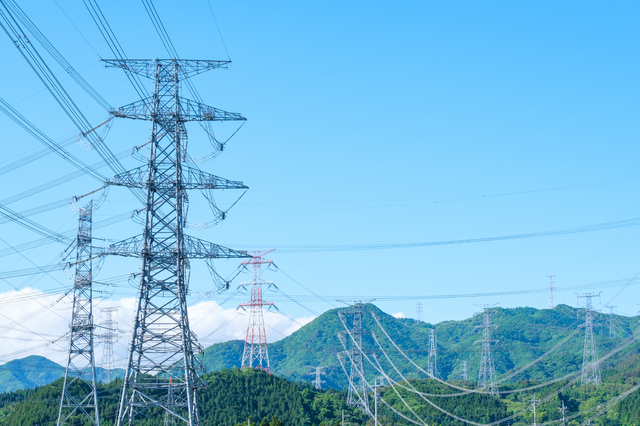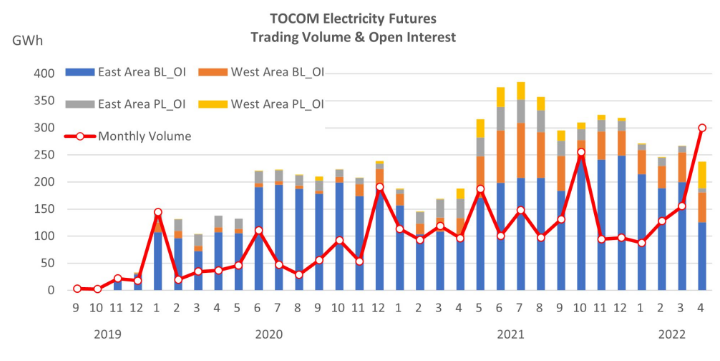TOCOM Energy
JPX Energy Market Updates(May 16, 2022)
The oil market continues to trade in a large intra-day range and is struggling to find direction during this period of uncertainty for both supply and demand. After heavy sell off last Monday, crude oil price recoup almost all the losses. Intermonth spread of major crude oil future benchmarks also settled higher. The market took comfort in an easing of Covid cases in shanghai China last week, however there are more signs that we are seeing demand destruction at these higher prices. Nonetheless, the persistent threat of an escalation in the Ukraine war, as well as the possibility of further sanctions by the West might keep a floor under oil prices for now.
We had a number of data releases last week, including the IEA, EIA and OPEC’s monthly oil market reports.
On the demand side, growth projections for this year have been revised down collectively by these three agencies on a more tempered economic expansion and higher prices. The IEA have revised down global oil demand growth projections for this year by a slight 70 kb/d, to 1.8 mb/d, while most of this year’s expected growth took place in 1Q22, demand will be 230 kb/d lower than in 4Q21 as the economy slows and the impacts of higher prices bite.
China’s demand for this year has been revised down slightly but demand for 2Q22 has now been revised down by a total of 890 kb/d across the April and May Reports because mobility restrictions stifled commerce and left air traffic close to its April 2020 low level.
However, the latest trade data from China shows that despite the hit seen in domestic demand due to lockdowns, crude oil imports over April increased 4.1% MoM to average 10.5 million b/d. We will have to wait until later this month for more detailed trade data to see where this increase in April flows originated from. Russian oil flows to China could have increased over the month, given the larger discounts that we have seen for Russian crude since the war.
It also worth noting that global middle distillate including diesel and kerosene crack spreads at major global trading hubs increased substantially since the start of this year. In Singapore, lower refinery runs in China as well as lower export quotas constrained regional petroleum trade. US refining activity in April was also underwhelming, with operational issues and tight available capacity, leading to a counter-seasonal fall. Russia’s supply have also declined as a result of sanctions. This drop combined with lower refinery run rates over the period has produced a tight distillate market.
In the short term, as summer driving escalates and jet fuel continues to recover globally, world oil demand is set to rise by 3.6 mb/d from April to August according to IEA’s forecast. Demand growth and rapidly depleting inventories have led refinery margins to unprecedented levels across all regions and configurations. From the seasonal low in April to the peak in August, IEA expect a strong ramp-up in refining activity to fill the product supply gap. Global throughputs are forecast to rise by 4.7 mb/d, helping restock depleted product inventories in 3Q22 for the first time in two years. The increase will come mostly from China, Europe and the US.
OPEC and EIA have revised down their global oil demand outlook for this year by a 200 and 310 kb/d respectively in the latest OMR. But even with the demand drop, the forecast decline in Russian liquids production lifted the call on OPEC crude to 29.05 million b/d for the year, up from 28.96 million b/d in its previous forecast according to OPEC’s OMR. Breaking down the call on OPEC, the estimated need for the group's crude is expected to rise to 30.05 million b/d by Q4 from 28.01 million b/d in Q2.
According to IEA’s data, World oil supply fell by 710kb/d to 98.1 mb/d in April, that’s the biggest monthly loss since February 2021, Russia shut in nearly 1 mb/d. Production from other OPEC+ members continued to disappoint, with total oil output from the bloc down more than 1 mb/d. The declines widened the shortfall between the bloc’s supply versus official output targets to around 2.7 mb/d compared to 1.3 mb/d in March. The overall global decline was partially offset by higher non-OPEC+ supply, which rose by 380 kb/d led by strong gains in biofuels and a modest production increase from the United States. Risks are rising that the US will impose secondary sanctions on Russian oil customers and a new sixth round of European Union sanctions still under negotiation could also affect Russian supply.
Lastly, let’s take a look at inter- market spread.
The spread between JPX Dubai and ICE brent largely remain range bound during the last two trading weeks after found support at a higher level in April. In April, the spread between light and sweet crude grades and those heavy sour grades narrowed compared with March globally. The effect of sanctions and self-sanctioning by many crude oil buyers has contributed to less availability of these medium sour grades, contributing to higher prices. In the short term, all sweet crude grades in Europe have been racing higher because of oil field maintenance work in the North Sea from May through early July and the lack of Libyan export as well as record product cracks. But a rebound in Chinese demand and an escalation of Russian sanctions could lead to further upside risks to the spreads.






